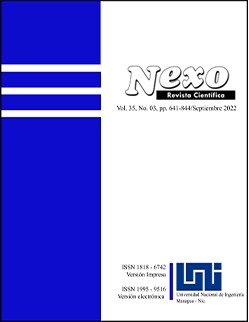Knowledge absorption capacity. Multiple case study
DOI:
https://doi.org/10.5377/nexo.v35i03.14995Keywords:
Knowledge, knowledge absorption capacity, Micro, small and medium enterprisesAbstract
Micro, small and medium enterprises are a very important part of any economy in the world. In Mexico they represent more than 90 percent of the existing companies. A challenge facing these organizations is the acquisition of knowledge and the ability to absorb it. These companies can bring knowledge from abroad to take advantage of it and use it within their internal processes, but how do they acquire knowledge and how do they take advantage of it for the functioning of their organizations? Within this research, a case study was carried out in three companies, where routines and activities were identified within the four dimensions of knowledge absorption capacity: Acquisition, assimilation, transformation and exploitation. As a result, the knowledge absorption process of organizations was obtained, that is, a set of routines and activities that these companies carry out to absorb knowledge.
Downloads
1489
Downloads
Published
How to Cite
Issue
Section
License
Copyright (c) 2022 Universidad Nacional de Ingeniería

This work is licensed under a Creative Commons Attribution 4.0 International License.
The authors who publish in Nexo Scientific Journal agree to the following terms:
- Authors retain the copyright and grant the journal the right of the first publication under the license Creative Commons Attribution License, which allows others to share the work with a recognition of the authorship of the work and the initial publication in Nexo Scientific Journal.
- Authors may separately establish additional agreements for the non-exclusive distribution of the version of the work published in the journal (for example, in an institutional repository or a book), with the recognition of the initial publication in Nexo Scientific Journal.
- Authors are allowed and encouraged to disseminate their works electronically (for example, in institutional repositories or in their own website) before and during the submission process, as it can lead to productive exchanges, as well as earlier and greater citation of published works.










